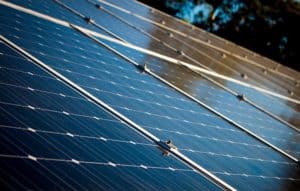The cost of energy is at an all-time high, and it doesn’t look like it’ll be coming down anytime soon. So if you’re looking for ways to reduce your electricity bill, solar power might just be the answer! Solar energy is a renewable, clean source of energy that will not only help in getting away from fossil fuels completely but also reduce your carbon footprint. The installation may be a little pricey, but in the long run, it will save you a lot of money!
1. What is solar energy?
Solar energy is basically using the power of the sun to produce electricity, heat water for homes and other applications, cook food, etc. Many countries are turning to harvest the power of the sun because solar power energy is very cost-effective in comparison to traditional energy sources much of the world has been using up until now. It can be used in different forms like solar panels, passive systems (e.g., solar hot water), conventional photovoltaic cells (which are used in things like calculators or satellites), or solar thermal power plants.
2. How it works?
There are two types of solar energy systems, active and passive. Active solar power systems use large, complicated machinery to convert sunlight into energy, whereas passive solar systems only require natural elements like insulation, reflectors, etc., to produce beneficial results. Solar panels are one example of active solar power systems, whereas solar hot water heaters can be seen as an example of passive.
3. Who is using it?
Solar energy is widespread and can be used by anyone, ranging from homeowners to apartment owners to businesses to the U.S. government! The use of solar power has increased over time, with countries like Germany leading the way in using solar energy. Other countries like Japan and the U.S. are catching up quickly, with around 1 million US homes now having some kind of solar power setup.
4. How much does it cost?

The price of installing a small-sized solar power system can go as low as $3000 but for bigger sizes, the initial investment can go as high as $40,000. A big factor that also depends on how much energy you need is the price of equipment and installation costs. There are many federal and state programs available for residential solar systems, which further decrease the installation costs of solar panel systems through many incentives they offer.
5. How can it help reduce my electricity bill?
Using solar power can help reduce your electricity bills by a great deal, especially if you live in a place where the cost of power is high. It helps save money from transportation costs, unlike fossil fuels which have to be extracted from deep underground and transported over long distances before they reach homes at a very high price. Solar power basically acts as an alternative source of energy that can be used instead of conventional power, which is constantly increasing in cost.
6. Are there any benefits to using solar power?
Apart from the obvious advantage of reducing electricity bills, solar energy also acts as a storage device for backup power during emergencies or cloudy days when solar panels do not function at their maximum level. It also helps reduce environmental pollution, eliminates our dependency on fossil fuels, and can be used to power cars that run on electricity!
Solar energy is a clean, renewable source of power that can help you reduce your electricity bills and environmental footprint. If saving money on electricity bills sounds attractive to you, it may be time for a solar panel installation!

